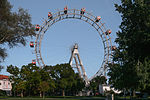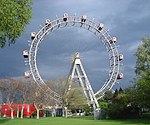Wiener Looping
Roller coasters introduced in 2024Roller coasters manufactured by Mack RidesRoller coasters under constructionSteel roller coasters
Wiener Looping is a steel roller coaster at Wurstelprater (located within Wiener Prater) in Leopoldstadt, Vienna, Austria. Built by Mack Rides, the coaster will span multiple sections of the amusement park and be one of its few attractions operated by owner Stefan Sittler-Koidl. Wiener Looping was first announced in 2021 but was marred by several construction setbacks, most notably the unauthorized demolition of a nightclub and its associated legal injunction. The coaster is planned to open in September 2024.
Excerpt from the Wikipedia article Wiener Looping (License: CC BY-SA 3.0, Authors).Wiener Looping
Jantschweg, Vienna KG Leopoldstadt (Leopoldstadt)
Geographical coordinates (GPS) Address Website Nearby Places Show on map
Geographical coordinates (GPS)
| Latitude | Longitude |
|---|---|
| N 48.216458 ° | E 16.401085 ° |
Address
Wurstelprater (Volksprater)
Jantschweg
1020 Vienna, KG Leopoldstadt (Leopoldstadt)
Austria
Open on Google Maps









